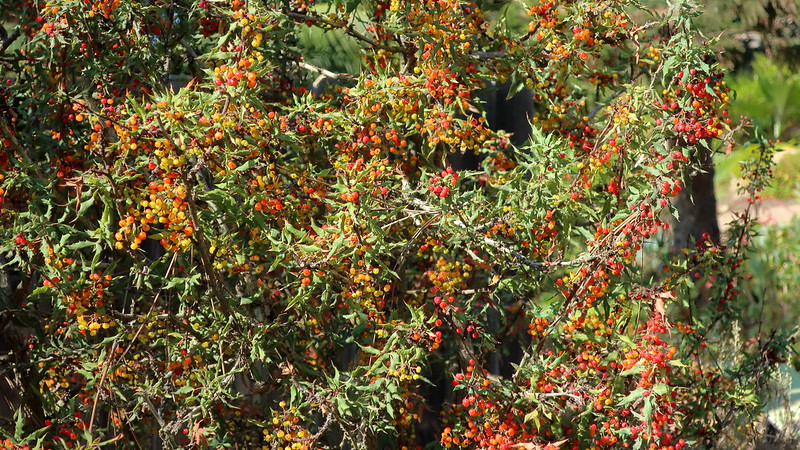Nevin’s Barberry Facts
- Most notably, the fabulous Nevin’s Barberry represents a truly visually striking shrub. Sadly, this distinctive looking plant also ranks as one of the rarest types of shrub in the world.
- Currently, the plant commonly grows in commercial nurseries, in many parts of North America. However, and quite sadly, in the wild it remains extremely rare.
- Furthermore, only 21 known, naturally occurring populations of Nevin’s Barberry still exist in the wild. But, the sad part of its story does not simply end there, though that would be enough.
- Yet another factors makes its continued existence in the wild even more precarious. That factor is the fact that many of these populations consist of fewer than five individual plants.
- Finally, at last count, only 250 known individual plants remain in the wild. Due to these factors, the IUCN currently list the species as Critically Endangered.
Related Articles
Nevin’s Barberry Physical Description
First of all, the Nevin’s Barberry forms a moderately large species of shrub. That’s because individual plants attain a size of as much as 13 ft (4 m) in height. Most specimens, however, do not quite attain that size in the wild.
Further, the rather impressive species evolved as an evergreen, with firm, spiny-toothed leaflets. In addition, it also produces these leaflets in extremely thickly interwoven groupings.
Also, its distinctive foliage principally displays as a dark green in color. Meanwhile, the flowers the plant produces develop as bright yellow racemes. Additionally, much like the leaflets, these appear in thick layers.
Further, the fruit of the Nevin’s Barberry develops as a small, bright red berry, which it also produces in large numbers. Its berries appear in late summer and serve as a favorite food of local bird populations.
- Kingdom: Plantae
- Phylum: Angiosperms
- Class: Eudicots
- Order: Ranunculales
- Family: Berberidaceae
- Genus: Mahonia
- Species: M. nevinii
Nevin’s Barberry Distribution, Habitat, and Ecology
Firstly, the Nevin’s Barberry grows endemically in only a small area of southern California, in the United States. Furthermore, within this range, within only two counties, it only exists in harsh habitat types.
The various topographical conditions it inhabits include chaparral, flat sandy washes, rocky canyons, mountain terraces, and summits. Also, the majority of its remaining endemic territory lies within the San Gabriel Mountains.
Given the scarcity of its numbers, as well as its extremely scant numbers, it faces serious danger. In fact, the greatest threats to the continued presence of the Nevin’s Barberry in the wild remains habitat loss. However, climate change now plays a role as well.
Finally, this appears especially true, given a disturbing fact. That holds true because many of the remaining populations occur on privately owned land. These, therefore, remain subject to potential urban development.
Species Sharing Its Range
Check out our other articles on 7 Awe-Inspiring Ocean Crustaceans, Victoria Crowned Pigeon, Belogradchik Rocks, Loggerhead Sea Turtle, Happy Alien, Chinese Giant Salamander

